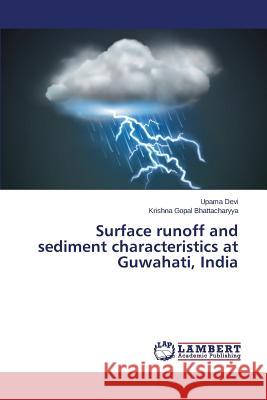Surface runoff and sediment characteristics at Guwahati, India » książka
Surface runoff and sediment characteristics at Guwahati, India
ISBN-13: 9783659418631 / Angielski / Miękka / 2015 / 244 str.
This work has yielded a comprehensive study on the runoff characteristics as well as the sediments from nine different locations of Guwahati, India. The study tries to give a thorough understanding of the sediment-runoff interactions and shows which are the most mobile metals in the runoff sediments of the city. A detailed speciation study of the trace metals was carried out and it was found that the metals in the sediments were bound to different chemical fractions. Cd was the most predominant in the carbonate-bound fraction, while Co and Cu showed predominant presence in the fraction bound to organic matter and sulphide. In case of Cr and Zn, the residual fraction was the most predominant one. On the other hand, most of Mn was bound to the reducible phase. While Ni was bound predominantly to the exchangeable fraction, it was also distributed almost equally in the other fractions. The leaching experiments showed that the metals from the sediments leached out much more in an acidic medium than in a basic medium. Increase in the acid concentration enhanced the leaching of the metals from the sediments. The metal contents in the sediments were much higher than those in the runoff.
This work has yielded a comprehensive study on the runoff characteristics as well as the sediments from nine different locations of Guwahati, India. The study tries to give a thorough understanding of the sediment-runoff interactions and shows which are the most mobile metals in the runoff sediments of the city. A detailed speciation study of the trace metals was carried out and it was found that the metals in the sediments were bound to different chemical fractions. Cd was the most predominant in the carbonate-bound fraction, while Co and Cu showed predominant presence in the fraction bound to organic matter and sulphide. In case of Cr and Zn, the residual fraction was the most predominant one. On the other hand, most of Mn was bound to the reducible phase. While Ni was bound predominantly to the exchangeable fraction, it was also distributed almost equally in the other fractions. The leaching experiments showed that the metals from the sediments leached out much more in an acidic medium than in a basic medium. Increase in the acid concentration enhanced the leaching of the metals from the sediments. The metal contents in the sediments were much higher than those in the runoff.











